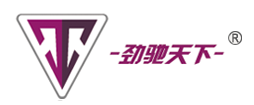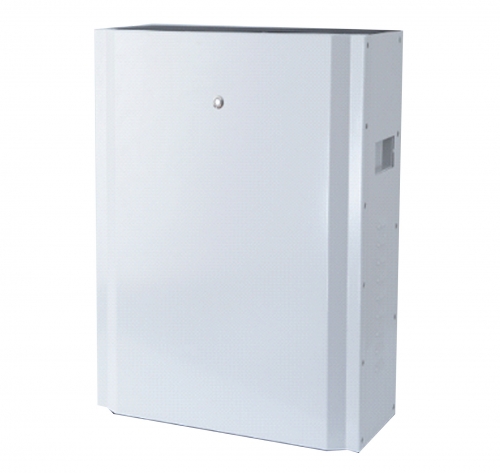Lithium battery energy storage battery Energy storage lithium battery Energy storage battery Energy storage battery
In recent years, the rapid development of my country's new energy vehicle industry has also aroused the market's attention to the recycling of scrapped batteries. On October 31, the New Energy Vehicle Power Battery Recycling System Construction Forum was held in Beijing. The participants exchanged and discussed recycling management policies, recycling system construction, cascade utilization scenario applications, and technology development. With the intensive introduction of a series of national policies, the blue ocean market has gradually emerged.
Build a recycling system
At the forum, Li Li, inspector of the Energy Conservation and Comprehensive Utilization Department of the Ministry of Industry and Information Technology, said that accelerating the construction of a waste power battery recycling system is an urgent and arduous task at present. All localities should earnestly implement the policies that have been issued, accelerate the promotion of pilot work, promote cross-regional and cross-industry cooperation, and actively explore the formation of a market-oriented recycling model with strong technical and economic performance and friendly resources and environment. At the same time, automobile manufacturers should strictly implement producer responsibility, strengthen subject awareness, earnestly fulfill recycling responsibilities, and implement full life cycle traceability management.
It is understood that waste power batteries not only have the potential to cause heavy metal pollution, but the electrolyte is also highly corrosive and toxic, and it is easy to produce toxic chemical gases, which is harmful to human health. According to the forecast of the China Automotive Technology Research Center, the service life of power batteries is generally 5-8 years, which means that the new energy batteries put into the market in the early stage are basically at the critical point of elimination. From 2018 to 2020, the total scrapped power batteries in China will reach 120,000 to 200,000 tons; by 2025, the annual scrapped power batteries may reach 350,000 tons.
Data released by the Traffic Management Bureau of the Ministry of Public Security showed that as of September 2018, the number of new energy vehicles in my country reached 2.21 million, of which 1.78 million were pure electric vehicles, accounting for 80.53% of the total number of new energy vehicles. It is worth noting that at the end of 2017, the number of new energy vehicles in China was 1.53 million, an increase of about 44% in 9 months. In addition, in the first 9 months of this year, the production and sales of new energy vehicles in my country were 735,000 and 721,000 respectively, with a year-on-year cumulative growth of 73% and 81.1% respectively. Under the influence of multiple factors such as policy support, technological progress, and cost reduction, my country's new energy vehicle industry is developing rapidly.
Against this backdrop, there will be a huge market for the recycling of new energy power batteries. In fact, the residual energy of power batteries retired from new energy vehicles is still above 70%. After selection and testing, they can be further applied in many fields such as energy storage, distributed photovoltaic power generation, household electricity, and low-speed electric vehicles, reflecting huge reuse value.
Intensive policy implementation
In order to make the "retired" power batteries continue to play their residual heat, my country has continuously improved the construction of relevant systems in the recycling and utilization of power batteries. In February this year, the Ministry of Industry and Information Technology and other 7 ministries and commissions issued the "Interim Measures for the Management of Recycling and Utilization of Power Batteries for New Energy Vehicles", requiring automobile manufacturers to establish power battery recycling channels and be responsible for recycling waste power batteries generated after the use and scrapping of new energy vehicles. Encourage automobile manufacturers, battery manufacturers, scrapped automobile recycling and dismantling companies and comprehensive utilization companies to cooperate in building and sharing waste power battery recycling channels through various forms.
On July 3, the Ministry of Industry and Information Technology issued the "Interim Provisions on the Traceability Management of Recycling and Utilization of Power Batteries for New Energy Vehicles". From August 1 this year, information will be collected on the entire process of power battery production, sales, use, scrapping, recycling, and utilization, and the performance of recycling and utilization responsibilities of the main bodies in each link will be monitored. At the same time, it is required to establish a traceability management platform. At present, the power battery traceability management platform has been officially put into operation.
Lin Boqiang, Dean of the China Energy Policy Research Institute of Xiamen University, said that at present, my countryMany scrapped batteries of new energy vehicles have not entered the formal channels. Due to the few recycling outlets and the difficulty of recycling in other places, some companies handle them in a very extensive manner, and the power battery recycling market lacks standardized management. The traceability management platform will implement information management and control of the entire process of power battery recycling and utilization, and correspondingly clarify the specific responsible persons, which will promote the recycling and utilization of power batteries.
Subsequently, the Ministry of Industry and Information Technology, the Ministry of Science and Technology and other seven ministries and commissions jointly issued the "Notice on Doing a Good Job in the Pilot Work of Recycling and Utilization of Power Batteries for New Energy Vehicles". 17 provinces, cities and regions including the Beijing-Tianjin-Hebei region, Shanxi Province, and Shanghai, as well as China Tower Co., Ltd. were identified as pilots to do a good job in the pilot work of recycling and utilization of power batteries for new energy vehicles.
It is understood that the recycling of new energy vehicle batteries is not an "unsolvable" problem. At present, the material recycling rate of new energy vehicle batteries in developed countries has reached more than 90%. The analysis believes that as long as the government introduces market-oriented mechanisms on the basis of good guidance and supervision, and encourages enterprises to establish a closed loop of value transactions, through the joint efforts of the government and enterprises, a new energy vehicle battery recycling system that adapts to China's national conditions can be created, and the large-scale and intensive operation of the new energy vehicle battery recycling industry can be achieved.
Li Yuke, Secretary General of the Strategic Alliance for Recycling of Electric Vehicle Power Batteries, said that although the recycling of power batteries has not yet arrived in terms of time, relevant work must be prepared in advance, otherwise, once the peak period arrives, there will be greater obstacles and problems.
The industrial chain is gradually improving
Under the guidance of national policies, the field of power battery recycling has become a blue ocean market. According to relevant institutions, the lithium battery recycling market will usher in a large-scale outbreak in 2020, when the amount of retired automotive power lithium batteries will reach 24G watt-hours; by 2025, the scale of the power battery recycling market will reach 37 billion yuan.
Faced with the huge market growth, companies inside and outside the industry have accelerated their layout in this field and gradually built an industrial chain. From the perspective of power battery recycling, the upstream and downstream industrial chains extend to the new energy vehicle industry chain and energy storage field.
It is understood that the recycling of power batteries mainly includes two methods: cascade utilization and resource regeneration. Cascade utilization refers to the disassembly, sorting and reassembly of power batteries, and their application to large-scale power consumption fields such as photovoltaic power stations and microgrids.
In terms of cascade utilization, on October 31, China Tower signed a letter of intent for cooperation in the construction of a power battery recycling system with 11 new energy vehicle manufacturers including FAW, Dongfeng, and BYD.
Gao Buwen, deputy general manager of China Tower, said that as of now, China Tower has used 800MWh of new energy vehicle batteries, totaling 10,000 tons, and installed 300,000 sets of batteries at 80,000 base stations, reducing carbon emissions by more than 80,000 tons. It is expected that by 2020, China Tower will consume the retired power batteries of electric vehicles nationwide.
Lin Boqiang also emphasized that cascade recycling is mainly used for energy storage projects, but it is necessary to choose a more economical combination based on the power consumption of the battery and the size of the project.
In fact, there have been successful precedents of this kind in China. In July this year, the largest battery energy storage power station in China was successfully connected to the grid and put into operation in Beishan, Zhenjiang. The Zhenjiang Energy Storage Power Station uses lithium iron phosphate batteries as energy storage components and is built on the site of 8 retired substations. The total power of the power station is 101,000 kilowatts and the total capacity is 202,000 kilowatt-hours, which can meet the living electricity needs of 170,000 residents.
Lin Boqiang said, "The requirements for batteries in energy storage power stations are much lower than those in electric vehicles. " In addition to being used in large-scale energy storage projects, recycled power batteries can also be used in distributed photovoltaic power generation, low-speed electric vehicles, solar street light/garden light energy storage and some household electricity.
However, due to differences in power battery performance and specifications, retired power batteries need to undergo multiple tests and other processes before they can be reused, which has become the biggest obstacle to the reuse of retired power batteries.
Therefore, many companies have also joined the market and adopted resource recycling to deal with waste power batteries. In September this year, the Ministry of Industry and Information Technology announced the list of companies that meet the "Industry Standards for Comprehensive Utilization of Waste Power Batteries for New Energy Vehicles" (the first batch), including Quzhou Huayou Cobalt New Materials Co., Ltd., Ganzhou Haopeng Technology Co., Ltd., Jingmen Greenme New Materials Co., Ltd. and other five companies.
Take Jingmen Greenme New Materials Co., Ltd. as an example. The company will mix the residue after metal recycling with coal gangue, shale, etc., roast, and press them into environmentally friendly bricks, thereby realizing the recycling of related resources.
Lithium battery energy storage battery Energy storage lithium battery Energy storage battery Energy storage battery manufacturer







